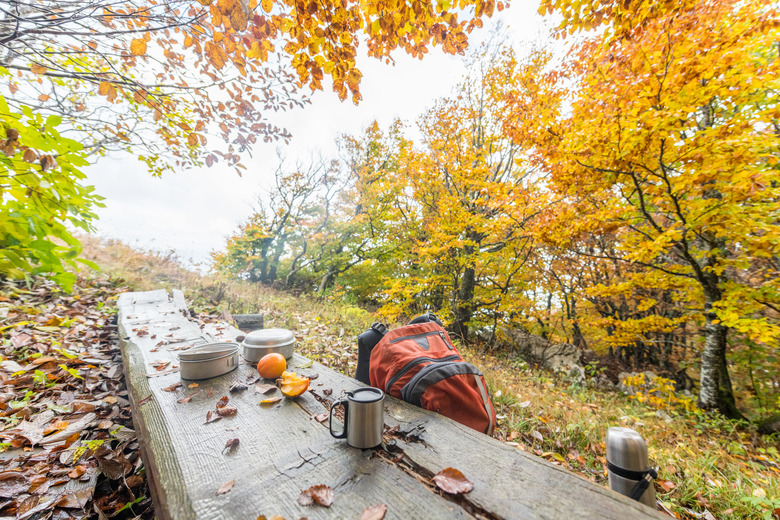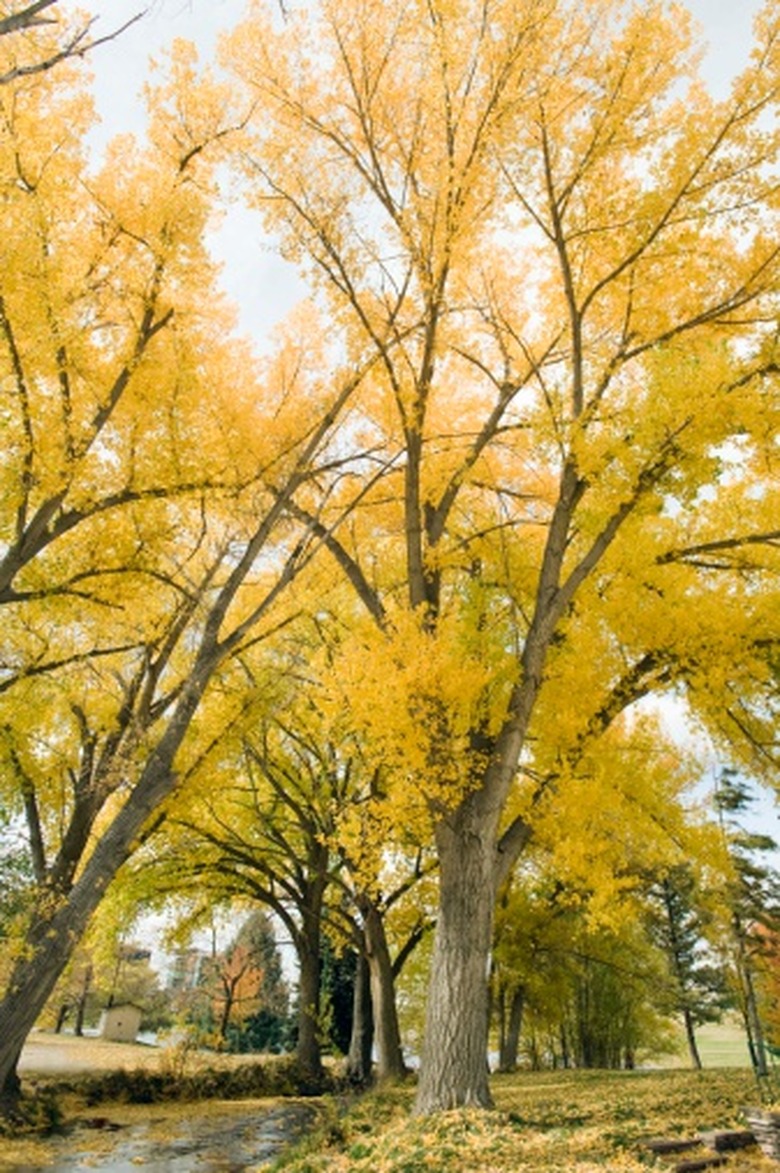Outdoor Activities Done In The Temperate Deciduous Forest
Deciduous forests in the Midwest offer a variety of opportunities for recreational activities. Many are located near lakes or waterways, creating more options for fun. Deciduous forests are home to a wide variety of insects, reptiles, birds and mammals to photograph or study. Wildflowers, mosses and many edible plants grow in clearings and along the edges of wooded areas.
Walking through Beauty
Walking through Beauty
Walking trails through natural forests provide opportunity for exercise and appreciation of natural beauty. A deciduous forest provides an ever-changing natural panorama. In spring, soft greens contrast with the dark greens of cedar. In summer, the forest offers protection from the summer sun. Leaf color changes in autumn paint the forest gold, red and russet. Snowfall drapes the trees, and brings a peaceful quiet.
Camping
Camping
Deciduous trees create a pleasant place to camp. Deadwood fallen from the trees provides material to build lean-tos or wood for a campfire. For fire safety, clear all debris in a ten-foot circle around a camp fire spot. Summer trees shelter tents in pleasant shade; in winter, there are no leaves to block the sun. Fallen leaves can be layered under a tent floor or ground cloth to provide insulation. Rake through the leaves with a stick to dislodge any forest residents; discourage visiting snakes by encircling the sleeping area with a rough rope–such as hemp. Snakes dislike the feel of the prickly fibers on their undersides. Roll all sleeping gear tightly till time for use, and check for bugs and spiders before retiring.
Wild Crafting
Wild Crafting
Bark, twigs and limbs drop from deciduous trees, as do acorns. These materials can be made into carvings, or picture frames. A gnarled piece of dead wood can make an interesting base for a three dimensional design. Glue an arrangement of dried flowers, seed pods, grasses or pretty pebbles to its surface. Arrange four twigs in a rectangle or square. Glue acorns, seed pods or small pebbles to it. Glue or tie broad leaves or bark to the back of it. Create a woodland scene with found materials, or use as a frame for photographs taken during your woodland excursion.
Wild Foraging
Wild Foraging
Beginning in spring and through the summer wood sorrel and tiny wild onions can be gathered and eaten. Mushrooms also abound; but mushrooming should be done in the company of an experienced gatherer. Mushrooms can be tricky to identify, and many are poisonous. Throughout the summer, blackberries, gooseberries, wild cherries and wild strawberries grow in or along the edges of a deciduous forest. In autumn, hickory trees bear a bounty of sweet nuts; acorns may be gathered from oaks and processed into a kind of flour. Fox grapes ripen in late August, and when the frosts come, persimmons soften into wrinkled orange globes of sugary goodness.
References
- "The Boyscout Handbook;" William Hilcourt; 1979
- "Stalking the Wild Asparagus;" Eull Gibbons;2005;
- "Nature Crafts for Kids;" Gwen Diehn; 1997
Cite This Article
MLA
Fernchild, Daisy Peasblossom. "Outdoor Activities Done In The Temperate Deciduous Forest" sciencing.com, https://www.sciencing.com/outdoor-done-temperate-deciduous-forest-8428344/. 22 November 2019.
APA
Fernchild, Daisy Peasblossom. (2019, November 22). Outdoor Activities Done In The Temperate Deciduous Forest. sciencing.com. Retrieved from https://www.sciencing.com/outdoor-done-temperate-deciduous-forest-8428344/
Chicago
Fernchild, Daisy Peasblossom. Outdoor Activities Done In The Temperate Deciduous Forest last modified March 24, 2022. https://www.sciencing.com/outdoor-done-temperate-deciduous-forest-8428344/

